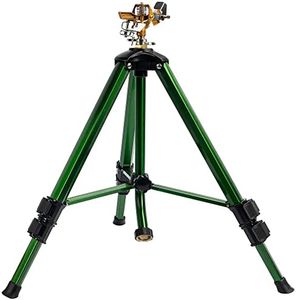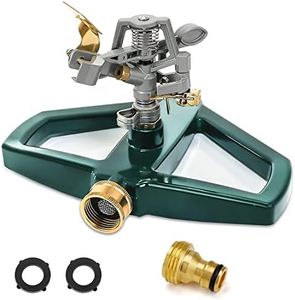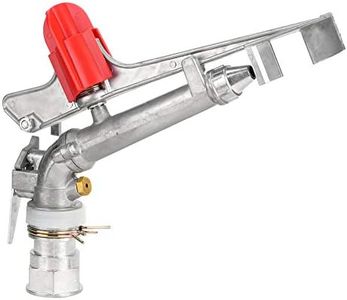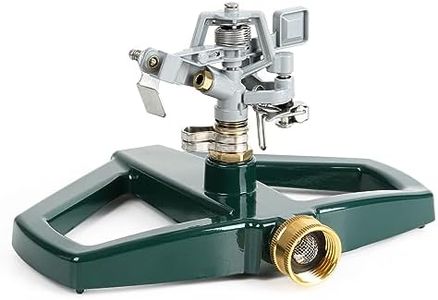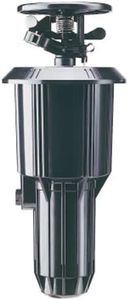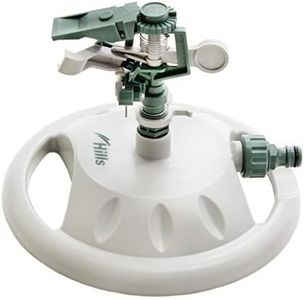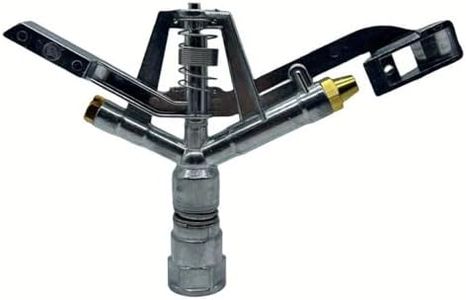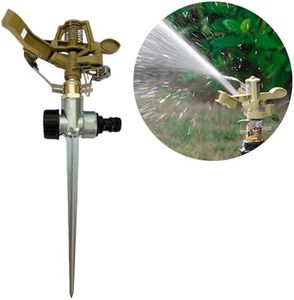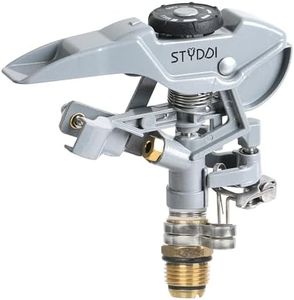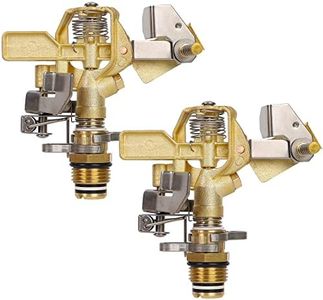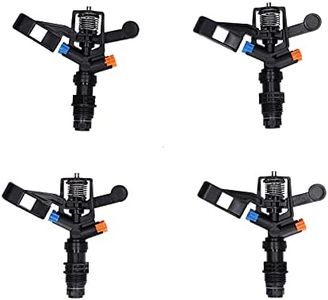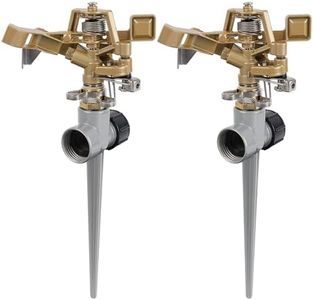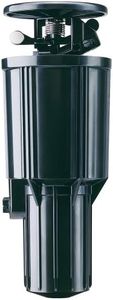We Use CookiesWe use cookies to enhance the security, performance,
functionality and for analytical and promotional activities. By continuing to browse this site you
are agreeing to our privacy policy
10 Best Impact Sprinklers
From leading brands and best sellers available on the web.By clicking on a link to a third party's website, log data is shared with that third party.
Buying Guide for the Best Impact Sprinklers
Choosing the right impact sprinkler is important to ensure efficient watering for your garden, lawn, or even small fields. Impact sprinklers operate by using the force of outgoing water to rotate, delivering a consistent spray over a set area. To find the best one for you, consider both the size and shape of the area you want to water, your water pressure, and the durability you need. Understanding key specifications will help you match an impact sprinkler to your watering needs.Spray Coverage (Radius/Distance)Spray coverage tells you how far the sprinkler can throw water from its center point, usually measured in feet or meters. This is crucial because it determines how much ground the sprinkler can cover in one go. Smaller gardens or spots close to edges do well with sprinklers with a shorter radius (about 15–25 feet), while larger lawns and gardens benefit from longer coverage (up to 40–45 feet or more). To pick the right one, measure your watering area and choose a sprinkler whose coverage matches or overlaps as needed.
Adjustable Spray PatternThe spray pattern shows whether the sprinkler can water a full circle (360°), half circle (180°), or any segment in between. This matters if you need to avoid watering driveways, walls, or fences. If your watering area is an odd shape or borders an edge, look for a sprinkler with adjustable spray arms so you can set it to water only where you need. Fixed patterns are good for open areas, while adjustable models allow greater flexibility.
Material (Construction Quality)The material of an impact sprinkler usually ranges from plastic to metal (like brass or zinc). Metal sprinklers tend to be more durable and can withstand high water pressure, heavy use, or outdoor exposure over years, making them suitable for larger or rougher gardens. Plastic versions are lighter, affordable, and less likely to corrode, which is fine for occasional or light use in small yards. If you want something long-lasting or for frequent use, look for mostly metal construction; for temporary or portable needs, plastic may be enough.
Flow Rate (Gallons Per Minute/Liters Per Hour)Flow rate tells you how much water the sprinkler uses in a given time, usually shown as gallons per minute (GPM) or liters per hour (LPH). This spec matters for matching your water supply's capacity and managing your water usage. Low flow rates (around 2–3 GPM) are better for conserving water or slow, deep watering, while high flow rates (up to 6 GPM or more) suit larger areas but may require more water supply. Consider your region’s water restrictions and the plants’ needs when choosing – delicate plants and clay soils do better with lower rates to prevent puddling.
Connection Type and CompatibilityImpact sprinklers connect to hoses or irrigation systems, most often with standard-threaded fittings. Some have quick-connect ends for easy setup. This spec is important to make sure the sprinkler fits your existing hose or system without extra adapters. Before buying, check the thread type and size on your hose and compare to the sprinkler’s connection – usually labeled as 1/2-inch or 3/4-inch. Choose a sprinkler that's compatible for a leak-free and easy setup.
Pressure RangeThe pressure range indicates the water pressure (measured in PSI or bar) at which the sprinkler works best. Pressure that's too low can cause a weak spray, while excessive pressure might damage the sprinkler or create misting (wasting water). Most residential systems work between 30 and 60 PSI. If your water pressure is on the lower end, look for sprinklers designed for low-pressure use. If you have high pressure, make sure the sprinkler can handle it without malfunctioning.
